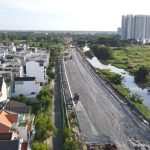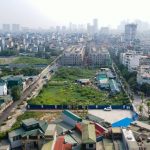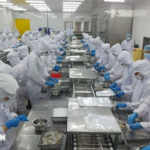Seven Investment Phases Over 22 Years
On August 28, Deputy Prime Minister Tran Hong Ha chaired a meeting with several ministries, sectors, and localities regarding the draft detailed planning for a group of seaports, wharves, piers, moorings, water areas, and water regions for the period of 2021-2030, with a vision towards 2050.
At the meeting, the Deputy Prime Minister also listened to a report on the investment policy for the Saigon Gateway International Transhipment Port project in Can Gio district, Ho Chi Minh City, providing services related to the exploitation of container port seaports.
According to a report by the Ministry of Planning and Investment, the proposed Can Gio seaport project is expected to cover an area of 571 hectares, with a total investment of approximately VND 113,500 billion (equivalent to US$4.8 billion). The project is planned to be implemented in seven investment phases over 22 years.
Regarding the environmental impact of the project, Deputy Minister of Natural Resources and Environment Le Cong Thanh expressed his opinion that as the project is located in the buffer zone of the Can Gio Mangrove Biosphere Reserve, a regenerated mangrove forest recognized by UNESCO, careful assessments of its environmental, nature conservation, and marine environment and resource impacts are necessary.
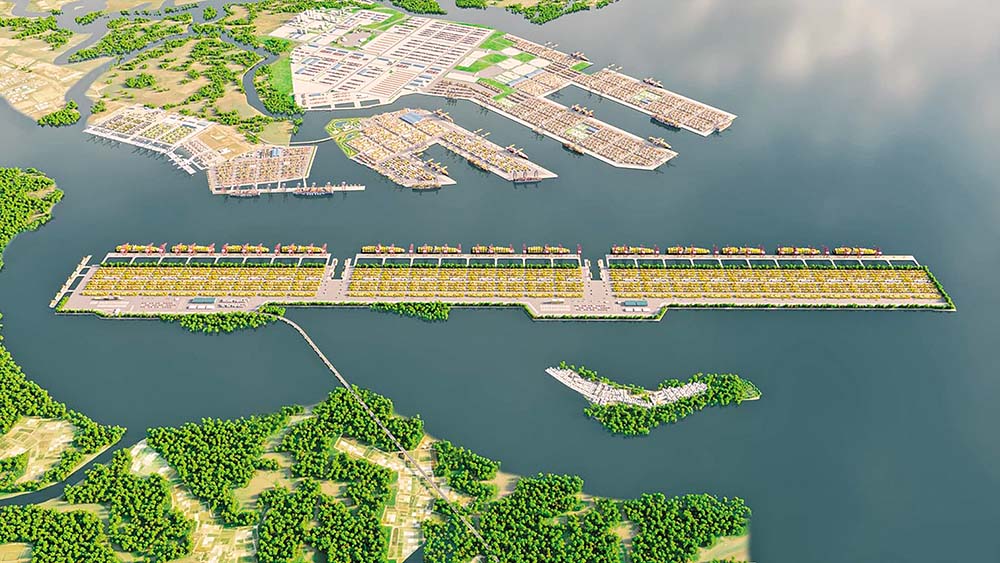
Artist’s impression of the “super project” Can Gio Port – Photo: Ho Chi Minh City People’s Committee
In addition, more concrete assessments are needed regarding the planning and land use in the surrounding areas, as well as the project’s compatibility with the overall master plan.
In response, the representative of the Ho Chi Minh City People’s Committee affirmed and committed that a detailed assessment of the project’s environmental impact would be carefully studied and evaluated during the preparation of the project’s feasibility report, in accordance with environmental laws, to ensure no impact on the Can Gio Mangrove Biosphere Reserve.
Furthermore, the city will require the investor to employ modern and environmentally friendly exploitation technology, ensuring that the investment, construction, and port operation processes do not affect the ecological environment, especially the Can Gio mangrove forest.
After considering the opinions expressed at the meeting, Deputy Prime Minister Tran Hong Ha concluded and assigned the Ministry of Planning and Investment to coordinate with the Ministries of Agriculture and Rural Development, Natural Resources and Environment, Transport, the Ho Chi Minh City People’s Committee, and related ministries and sectors to review the project’s synchronization and consistency with relevant planning schemes. He also instructed them to promptly complete the necessary documents for the appraisal and approval of the investment proposal, further clarify the specific objectives for each phase and the “project life cycle” in accordance with legal regulations, and supplement requirements and orientations for the transfer of modern technology.

Deputy Prime Minister Tran Hong Ha speaks at the meeting on August 28 – Photo: VGP/Nguyen Hoang
The Deputy Prime Minister emphasized that the design of the Saigon Gateway International Transhipment Port must be comprehensive, detailed, and synchronized for the seven investment phases, clearly defining the positions of functional areas, addressing relationships with other port clusters, shared infrastructure, connectivity, and human resource training. He also noted that the environment should not be neglected or sacrificed, and that the overall benefits and harmony with other projects must be ensured.
Additionally, the Deputy Prime Minister stressed that the project should contribute to the goal of developing a number of seaports capable of competing internationally and regionally, attracting capable investors in terms of technology, human resources, and management, as well as attracting major shipping lines worldwide. He also mentioned the need for a roadmap to transition to a green port with accompanying infrastructure.

The Can Gio Port planning includes the development of 4 piers with a total length of over 2,000 meters – Illustration created by AI Chat GPT
World’s Largest Shipping Company Expresses Interest
In May this year, the Prime Minister approved adjustments to the master plan for the development of Vietnam’s seaport system for the period of 2021-2030, with a vision towards 2050. Among the projects, the Can Gio International Transhipment Port was identified as one of the prioritized investments in the coming time.
At the beginning of August, the Ministry of Planning and Investment submitted an appraisal report to the Prime Minister regarding the dossier requesting approval of the investment proposal for the project. This project is proposed by Saigon Port Joint Stock Company (a member of Vietnam Maritime Corporation – VIMC) and Terminal Investment Limited Holding S.A-TIL (a member of Mediterranean Shipping Company – MSC, one of the largest shipping companies in the world).
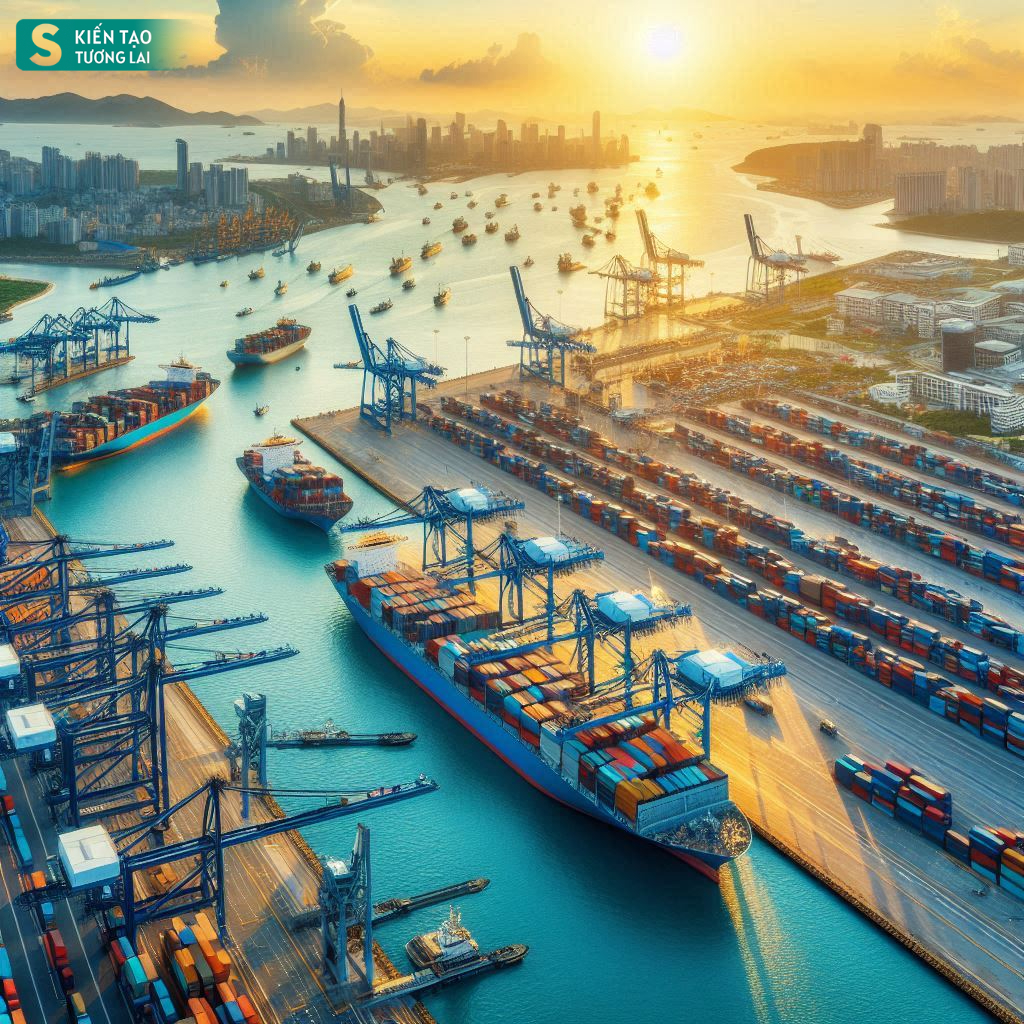
As per the planning, Can Gio Port will be able to accommodate vessels of 250,000 tons or larger, with container berths and other port facilities – Illustration created by AI Chat GPT
The planning also supplements the demand for international transhipment cargo through the Can Gio International Transhipment Port, estimated at 3.6 million TEUs (1 TEU equals one 20-foot standard container) by 2030. Accordingly, the port will have a scale of development that includes 4 piers with a total length of over 2,000 meters and a capacity of 57.6 million tons. The development will be in line with the process of attracting transhipment container cargo, and the port will be able to accommodate vessels of 250,000 tons or larger, with container berths and other port facilities.
The vision towards 2050 includes further investment in the Cai Mep port cluster and the logistics center behind the port, along with additional port facilities in Can Gio.
Regarding the chosen location, the Ho Chi Minh City Department of Transport shared that the Saigon Gateway International Transhipment Port is planned to be located in the Con Cho islet area, in Thanh An commune, Can Gio district.
In the appraisal report submitted to the Prime Minister earlier in August, the Ministry of Planning and Investment assessed that if successfully implemented, the project would affirm Vietnam’s position and stature in the international maritime map as a major transportation and logistics hub in the region and the world.
Following the news, the Can Gio Port project has attracted the attention of many investors, especially the MSC Group, one of the world’s largest container shipping companies, which has proposed to invest in this “super” project with the aim of accelerating the process to catch up with the sea transport trend.
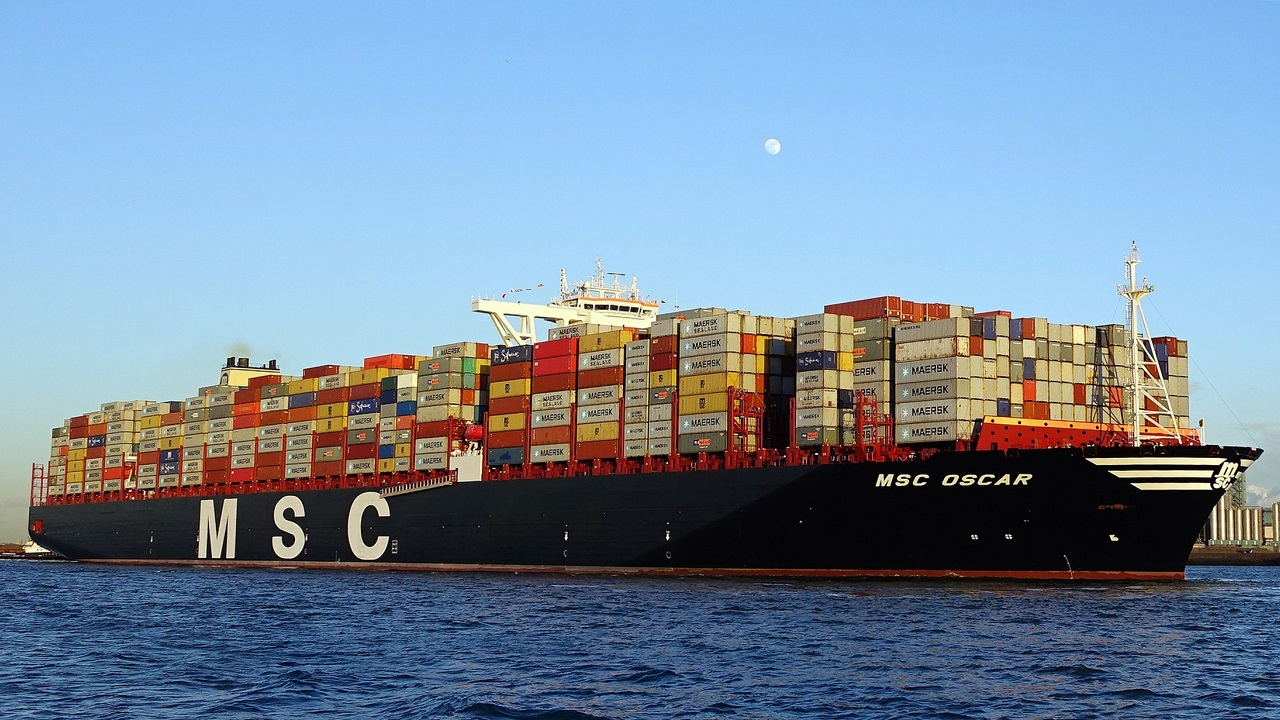
World’s largest shipping company MSC intends to invest in Can Gio Port
Regarding the capabilities of the foreign investor proposing to participate in the project, Mr. Pham Anh Tuan, Deputy General Director of Vietnam Maritime Corporation (VIMC), shared with Dau Tu newspaper that MSC is the world’s largest shipping company, headquartered in Geneva, Switzerland. MSC’s fleet capacity exceeds 23 million Teu per year, accounting for 18% of the world’s total fleet capacity. Their service network connects to more than 500 ports worldwide.
In Vietnam, MSC already provides services to the system of container ports in Hai Phong, Da Nang, and Cai Mep – Thi Vai. Every year, MSC’s fleet transports more than 1 million Teu of import and export goods from Vietnam to major markets such as the US, Europe, China, Japan, Australia, and Southeast Asia. MSC plans to develop its intra-Asia network and establish a transhipment hub that will consolidate cargo volumes currently handled at different Asian locations.
The most extensive bribery case ever in Thanh Hoa: Numerous suspects prosecuted for “Giving and Receiving Bribes”
The Provincial Security Investigation Agency (PSIA) of Thanh Hoa province announced on January 31st that it has made the decision to initiate a prosecution against 23 individuals in connection with the offenses of “Accepting bribes” and “Giving bribes” as stipulated in Article 354(3) and Article 364(2) of the Criminal Code.
“Prosecution of government officials, land registration officers, and tax department employees in the largest bribery case ever”
The Thanh Hoa Police Investigative Agency has initiated legal proceedings against 23 individuals involved in the crimes of “Bribery” and “Receiving bribes”. This is the largest bribery case in terms of the number of suspects ever discovered and apprehended by the Thanh Hoa Police.


























